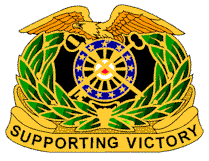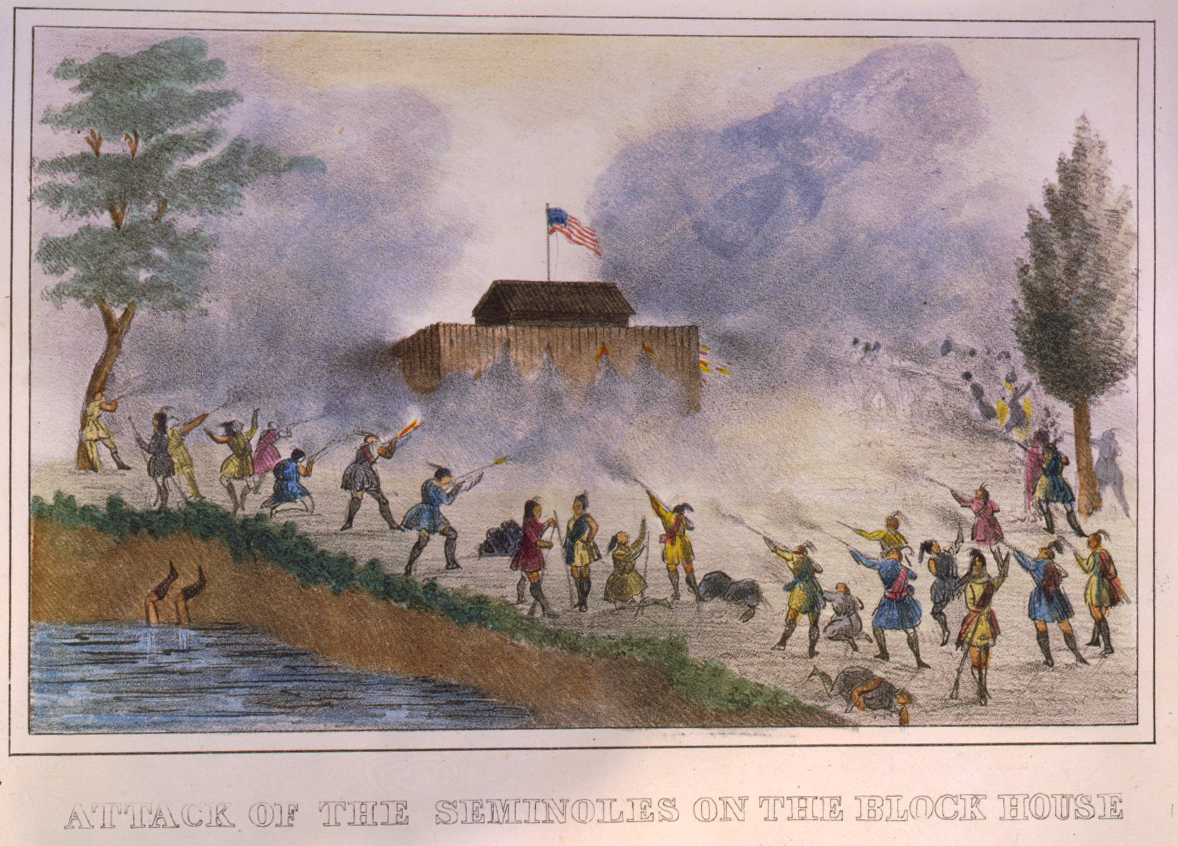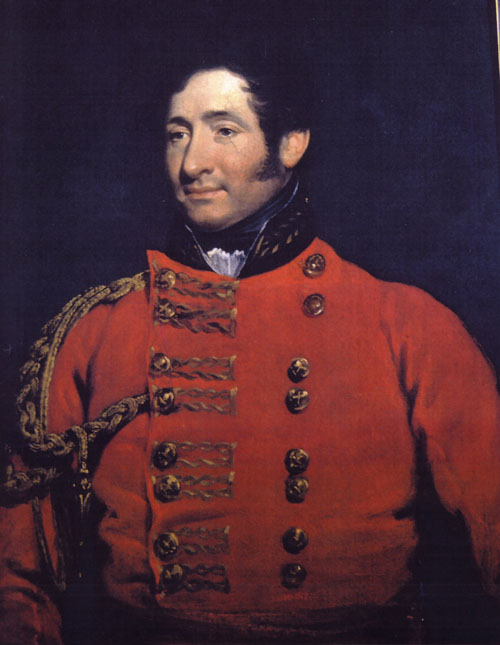|
Thomas Jesup
Thomas Sidney Jesup (December 16, 1788 – June 10, 1860) was a United States Army officer known as the "Father of the Modern Quartermaster Corps". His 52-year (1808–1860) military career was one of the longest in the history of the United States Army. Biography Thomas Jesup was born in Berkeley County, Virginia (now West Virginia). He began his military career in 1808, and served in the War of 1812, seeing action in the battles of Chippewa and Lundy's Lane in 1814, where he was wounded. He was appointed Quartermaster General on May 8, 1818, by President James Monroe.Brigadier General Jesup, father of the Quartermaster Corps , US Quartermaster Foundation Seminole War and controversy In 1836, while Jesup was still officially Quartermaster General, President |
Quartermaster General Of The United States Army
The Quartermaster General of the United States Army is a general officer who is responsible for the Quartermaster Corps (United States Army), Quartermaster Corps, the Quartermaster branch of the United States Army, U.S. Army. The Quartermaster General does not command Quartermaster units, but is primarily focused on training, doctrine and professional development of Quartermaster soldiers. The Quartermaster General also serves as the Commanding General, U.S. Army Quartermaster Center and School, Fort Gregg-Adams, Fort Gregg-Adams, Virginia, and the traditional Quartermaster Corps (United States Army), Quartermaster Corps. History The office of the Quartermaster General was established by resolution of the Continental Congress on 16 June 1775, but the position was not filled until 14 August 1775. Perhaps the most famous Quartermaster General was Nathanael Greene, who was the third Quartermaster General, serving from March 1778 to August 1780. The first Quartermaster General to ser ... [...More Info...] [...Related Items...] OR: [Wikipedia] [Google] [Baidu] |
United States Army
The United States Army (USA) is the primary Land warfare, land service branch of the United States Department of Defense. It is designated as the Army of the United States in the United States Constitution.Article II, section 2, clause 1 of the United States Constitution (1789).See alsTitle 10, Subtitle B, Chapter 301, Section 3001 It operates under the authority, direction, and control of the United States Secretary of Defense, United States secretary of defense. It is one of the six armed forces and one of the eight uniformed services of the United States. The Army is the most senior branch in order of precedence amongst the armed services. It has its roots in the Continental Army, formed on 14 June 1775 to fight against the British for independence during the American Revolutionary War (1775–1783). After the Revolutionary War, the Congress of the Confederation created the United States Army on 3 June 1784 to replace the disbanded Continental Army.Library of CongressJournals ... [...More Info...] [...Related Items...] OR: [Wikipedia] [Google] [Baidu] |
Creek People
The Muscogee, also known as the Mvskoke, Muscogee Creek or just Creek, and the Muscogee Creek Confederacy ( in the Muscogee language; English: ), are a group of related Indigenous peoples of the Southeastern WoodlandsTranscribed documents Sequoyah Research Center and the American Native Press Archives in the . Their historical homelands are in what now comprises southern , much of , western |
Quartermaster General (United States)
The Quartermaster General of the United States Army is a general officer who is responsible for the Quartermaster Corps (United States Army), Quartermaster Corps, the Quartermaster branch of the United States Army, U.S. Army. The Quartermaster General does not command Quartermaster units, but is primarily focused on training, doctrine and professional development of Quartermaster soldiers. The Quartermaster General also serves as the Commanding General, U.S. Army Quartermaster Center and School, Fort Gregg-Adams, Fort Gregg-Adams, Virginia, and the traditional Quartermaster Corps (United States Army), Quartermaster Corps. History The office of the Quartermaster General was established by resolution of the Continental Congress on 16 June 1775, but the position was not filled until 14 August 1775. Perhaps the most famous Quartermaster General was Nathanael Greene, who was the third Quartermaster General, serving from March 1778 to August 1780. The first Quartermaster General to ser ... [...More Info...] [...Related Items...] OR: [Wikipedia] [Google] [Baidu] |
United States Army Quartermaster Corps
The United States Army Quartermaster Corps, formerly the Quartermaster Department, is a sustainment and former combat service support (CSS) branch of the United States Army. It is also one of three U.S. Army logistics branches, the others being the Transportation Corps and the Ordnance Corps. The U.S. Army Quartermaster Corps mission is to support the development, production, acquisition, and sustainment of general supply, Mortuary Affairs, subsistence, petroleum and water, and material and distribution management during peace and war to provide combat power to the U.S. Army. The officer in charge of the branch for doctrine, training, and professional development purposes is the Quartermaster General. The current Quartermaster General is Colonel Erin C. Miller. History The Quartermaster Corps is the U.S. Army's oldest logistics branch, established 16 June 1775. On that date, the Second Continental Congress passed a resolution providing for "one Quartermaster General of th ... [...More Info...] [...Related Items...] OR: [Wikipedia] [Google] [Baidu] |
Mexican–American War
The Mexican–American War (Spanish language, Spanish: ''guerra de Estados Unidos-México, guerra mexicano-estadounidense''), also known in the United States as the Mexican War, and in Mexico as the United States intervention in Mexico, (April 25, 1846 – February 2, 1848) was an invasion of Second Federal Republic of Mexico, Mexico by the United States Army. It followed the 1845 American annexation of Texas, which Mexico still considered its territory because it refused to recognize the Treaties of Velasco, signed by President Antonio López de Santa Anna after he was captured by the Texian Army during the 1836 Texas Revolution. The Republic of Texas was ''de facto'' an independent country, but most of its Anglo-American citizens who had moved from the United States to Texas after 1822 wanted to be annexed by the United States. Sectional politics over slavery in the United States had previously prevented annexation because Texas would have been admitted as a slave state ... [...More Info...] [...Related Items...] OR: [Wikipedia] [Google] [Baidu] |
Second Seminole War
The Second Seminole War, also known as the Florida War, was a conflict from 1835 to 1842 in Florida between the United States and groups of people collectively known as Seminoles, consisting of Muscogee, Creek and Black Seminoles as well as other allied tribes (see below). It was part of a series of conflicts called the Seminole Wars. The Second Seminole War, often referred to as ''the'' Seminole War, is regarded as "the longest and most costly of the American Indian Wars, Indian conflicts of the United States". After the Treaty of Payne's Landing in 1832 that called for the Seminoles' removal from Florida, tensions rose until fierce hostilities occurred in Dade battle, Dade's massacre in 1835. This engagement officially started the war although there were a series of incidents leading up to the Dade battle. The Seminoles and the U.S. forces engaged in mostly small engagements for more than six years. By 1842, only a few hundred native peoples remained in Florida. Although no pea ... [...More Info...] [...Related Items...] OR: [Wikipedia] [Google] [Baidu] |
Battle Of Lundy's Lane
The Battle of Lundy's Lane, also known as the Battle of Niagara or contemporarily as the Battle of Bridgewater, was fought on 25 July 1814, during the War of 1812, between an invading American army and a British and Canadian army near present-day Niagara Falls, Ontario. It was one of the bloodiest battles of the war, and one of the deadliest battles fought in Canada, with approximately 1,720 casualties including 258 killed. The engagement was marked by intense musketry at close range and instances of friendly fire on both sides amidst the smoke and confusion, which caused several units to break entirely. The two armies fought each other to a stalemate; neither side held firm control of the field following the engagement. However, the casualties suffered by the Americans precipitated their withdrawal, and the British held the strategic initiative. Background On 3 July 1814 an American army under Major General Jacob Brown (general), Jacob Brown launched an attack across the Niaga ... [...More Info...] [...Related Items...] OR: [Wikipedia] [Google] [Baidu] |
Battle Of Chippawa
The Battle of Chippawa, also known as the Battle of Chippewa, was a victory for the United States Army in the War of 1812, during its invasion on July 5, 1814, of the British Empire's colony of Upper Canada along the Niagara River. This battle and the subsequent Battle of Lundy's Lane demonstrated that trained American troops could hold their own against British regulars. The battlefield is preserved as a National Historic Site of Canada. Background Early in 1814, it was clear that Napoleon was defeated in Europe, and seasoned British veteran soldiers from the Peninsular War would be redeployed to Canada. The United States Secretary of War, John Armstrong Jr., was eager to win a victory in Canada before British reinforcements arrived there. Major General Jacob Brown was ordered to form the Left Division of the Army of the North. Armstrong intended him to mount an attack on Kingston, the main British base on Lake Ontario, with a diversion by militia across the Niagara River ... [...More Info...] [...Related Items...] OR: [Wikipedia] [Google] [Baidu] |
War Of 1812
The War of 1812 was fought by the United States and its allies against the United Kingdom of Great Britain and Ireland, United Kingdom and its allies in North America. It began when the United States United States declaration of war on the United Kingdom, declared war on Britain on 18 June 1812. Although peace terms were agreed upon in the December 1814 Treaty of Ghent, the war did not officially end until the peace treaty was ratified by the 13th United States Congress, United States Congress on 17 February 1815. AngloAmerican tensions stemmed from long-standing differences over territorial expansion in North America and British support for Tecumseh's confederacy, which resisted U.S. colonial settlement in the Old Northwest. In 1807, these tensions escalated after the Royal Navy began enforcing Orders in Council (1807), tighter restrictions on American trade with First French Empire, France and Impressment, impressed sailors who were originally British subjects, even those who ... [...More Info...] [...Related Items...] OR: [Wikipedia] [Google] [Baidu] |
Major General (United States)
In the United States Armed Forces, a major general is a two-star rank, two-star general officer in the United States United States Army, Army, United States Marine Corps, Marine Corps, United States Air Force, Air Force, and United States Space Force, Space Force. A major general ranks above a Brigadier general (United States), brigadier general and below a Lieutenant general (United States), lieutenant general. The U.S. uniformed services pay grades, pay grade of major general is O-8. It is equivalent to the rank of Rear admiral (United States)#Rear admiral, rear admiral in the other United States Uniformed services of the United States, uniformed services which use Naval officer ranks, naval ranks. It is abbreviated as MG in the Army, MajGen in the Marine Corps, and in the Air Force and Space Force. Major general is the highest permanent peacetime rank that can be conferred upon a commissioned officer in the uniformed services (except when General of the Army (United States ... [...More Info...] [...Related Items...] OR: [Wikipedia] [Google] [Baidu] |
Brevet (military)
In military terminology, a brevet ( or ) is a warrant which gives commissioned officers a higher military rank as a reward without necessarily conferring the authority and privileges granted by that rank. The promotion would be noted in the officer's title (for example, "Bvt. Maj. Gen. Joshua L. Chamberlain" or "Bvt. Col. Arthur MacArthur"). It is not to be confused with a '' Brevet d'état-major'' in Francophone European military circles, where it is an award, nor should it be confused with temporary commissions. France In France, ''brevet'' is a word with a very broad meaning, which includes every document giving a capacity to a person. For instance, the various military speciality courses, such as military parachutism, are ended by the award of a brevet. The more important brevet in the French military is that of the École de guerre (''lit''. "school of war"), the French Staff College. Between 1870 and 1940, an ''officier breveté'' was a graduate of the ''École ... [...More Info...] [...Related Items...] OR: [Wikipedia] [Google] [Baidu] |









